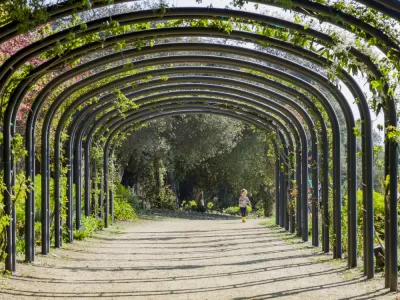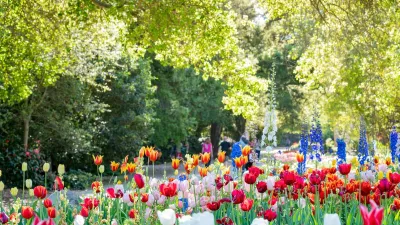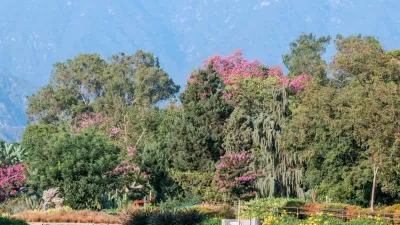Learn more about the new Descanso Gardens Master Plan which is visionary, thoughtful, comprehensive, and visually stunning.

The American Public Gardens Association defines a public garden as "an institution that maintains collections of plants for the purposes of public education and enjoyment, in addition to research, conservation, and higher learning. It must be open to the public and the garden’s resources and accommodations must be made to all visitors." Since the COVID-19 pandemic began, public gardens have become very popular destinations, serving as places of hope and healing for a weary public. Los Angeles County is home to numerous public gardens, including 150-acre Descanso Gardens, which is one of four botanic gardens and arboreta in the county's park system.
In this article, park planner Clement Lau discusses the new Master Plan for Descanso Gardens which was adopted by the Los Angeles County Board of Supervisors last year. The Master Plan seeks to implement the mission of the gardens, which is "to practice exemplary stewardship of Descanso’s distinctive character and assets; offer people an experience close to nature; and cultivate understanding of the natural world and people’s place in it through inspiration, education and example." The plan is the result of a collaborative effort involving the Descanso Gardens Guild, the L.A. County Department of Parks and Recreation, gardens staff, members, donors, volunteers, nearby residents, individuals representing community organizations—including various local garden clubs and societies—and a design team led by RIOS, a Los Angeles based multi-disciplinary design firm.
FULL STORY: Master-Planning A Garden

Planetizen Federal Action Tracker
A weekly monitor of how Trump’s orders and actions are impacting planners and planning in America.

Maui's Vacation Rental Debate Turns Ugly
Verbal attacks, misinformation campaigns and fistfights plague a high-stakes debate to convert thousands of vacation rentals into long-term housing.

San Francisco Suspends Traffic Calming Amidst Record Deaths
Citing “a challenging fiscal landscape,” the city will cease the program on the heels of 42 traffic deaths, including 24 pedestrians.

Amtrak Rolls Out New Orleans to Alabama “Mardi Gras” Train
The new service will operate morning and evening departures between Mobile and New Orleans.

The Subversive Car-Free Guide to Trump's Great American Road Trip
Car-free ways to access Chicagoland’s best tourist attractions.

San Antonio and Austin are Fusing Into one Massive Megaregion
The region spanning the two central Texas cities is growing fast, posing challenges for local infrastructure and water supplies.
Urban Design for Planners 1: Software Tools
This six-course series explores essential urban design concepts using open source software and equips planners with the tools they need to participate fully in the urban design process.
Planning for Universal Design
Learn the tools for implementing Universal Design in planning regulations.
Heyer Gruel & Associates PA
JM Goldson LLC
Custer County Colorado
City of Camden Redevelopment Agency
City of Astoria
Transportation Research & Education Center (TREC) at Portland State University
Jefferson Parish Government
Camden Redevelopment Agency
City of Claremont





























